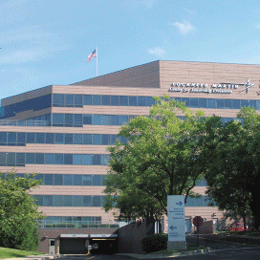
That’s because a combination of financial incentives and repurposed commercial stock have contributed to low vacancy rates in South Jersey, much to the delight of owners still licking their recession-induced wounds. Vacancy rates in Burlington, Camden and Gloucester Counties are low.
Commercial vacancy rates in Burlington County, home to a host of companies including Virtua, Destination Maternity and Lockheed Martin, is at 9.3 percent; Camden County, home to Campbell’s Soup, Foreman Mills and Cooper University Hospital, has a 13.9 percent vacancy rate and Gloucester County, home to Rowan University, US Foods and Kimberly-Clark, has the lowest rate at 8.3 percent, according to a report from NAI Mertz.
The positive outlook on commercial real estate’s across the board in South Jersey, says Fred S. Berlinsky Esq., president of Markeim Chalmers, Inc., a commercial real estate group based in Cherry Hill. “We’re seeing occupancy rise in all three areas, office, industrial and retail,” Berlinsky says. “It’s in all aspects.”
The decrease in vacancies is due to a lot of factors, experts say.
For example, while Camden County has the highest vacancy rate among the three South Jersey counties mentioned, it’s also become a popular place for businesses looking for space, explains Robert Powell, marketing director for Vineland Construction. “The incentives given by the Grow NJ program have done a lot to get people into the market,” Powell says. “That’s one of the major factors.”
The Grow NJ Assistance Program was created through the N.J. Economic Opportunity Act of 2013. Under this program, a qualified business that invests a minimum of $20 million to create or relocate and creates 100 jobs or more, is eligible for such incentives like 10-year-tax abatements with proof that both conditions have been met, says Tim Lizura, president and COO of the New Jersey Economic Development Authority.
While the program applies to the entire state, there are five Garden State Growth Zones—Atlantic City, Camden, Passaic, Paterson and Trenton—where business investors can get an even bigger bang for their buck, thus the migration of entities like the Philadelphia 76ers and Holtec International to the Camden area, says Melissa Orsen, CEO for NJEDA. “Camden, without question, has benefitted from this program,” she says. “This program has been especially successful in retaining and creating jobs.”
But those jobs are being housed in existing buildings, another reason why occupancy rates are relatively stable, Berlinsky notes. Right now, there’s not a lot of new construction going on in New Jersey’s commercial real estate market, he says.
“We’re seeing occupancy rates rise not so much because the economy is better or because employment rates are better, but because there’s been no new commercial real estate supply built in seven years,” Berlinsky says. “All that you have to choose from is what’s already built. There may be building for specific tenants, but other than that, there’s nothing new.”
“A lot of the space is being used by companies that are expanding their businesses,” Powell adds. “They’re putting capital back into their businesses.”
While he concedes that there isn’t much space available for development in places like Camden, Lizura doesn’t concede that there’s no new development coming with the businesses being brought in by Grow NJ’s incentive programs.
“To say that these businesses aren’t bringing any new development is kind of misleading,” he says. “I think that all of these projects require significant capital investment. It takes time to buy a site, hire developers and get it ready.”
But what about the outlook for retail space occupancy? Because Santa didn’t bring the economic windfall the company was expecting during the holiday shopping season, Macy’s is closing 40 stores and slashing 4,800 jobs. Finish Line is also shelving 150 stores, and Gap and J.C. Penney are also pulling the gates down for the last time in some of their mall locations.
Because internet shopping has become so popular, the fact that the solid occupancy rate for retail businesses is significant, Berlinsky says. Brick and mortar retail businesses are surviving, much to the relief of owners of those who own shopping malls.
“Don’t write [brick and mortar shopping centers] off yet,” he cautions. “The shopping centers are full. There are few vacancies. Rental rates for retail spaces have gone up from $15 a square foot to $25-a-square-foot. That’s a 25 to 30 percent increase in rent.”
Published (and copyrighted) in South Jersey Biz, Volume 6, Issue 2 (February, 2016).
For more info on South Jersey Biz, click here.
To subscribe to South Jersey Biz, click here.
To advertise in South Jersey Biz, click here.








